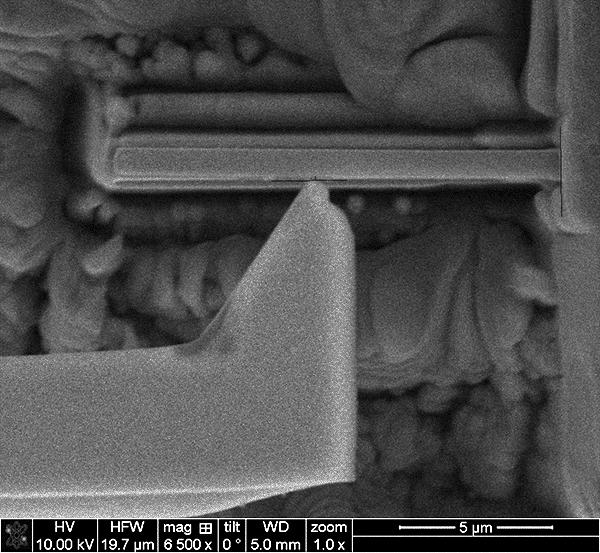Research
In-situ micro bend testing of SiC and the effects of Ga+ ion damage
The Young's modulus of 6H single crystal silicon carbide (SiC) was tested with micro cantilevers that had a range of cross-sectional dimensions with surfaces cleaned under different accelerating voltages of Ga+ beam. A clear size effect is seen with Young's modulus decreasing as the cross-sectional area reduces. One of the possible reasons for such size effect is the Ga+ induced damage on all surfaces of the cantilever. Transmission electron microscopy (TEM) was used to analyse the degree of damage, and the measurements of damage is compared to predictions by SRIM irradiation simulation

Conclusions:
It was identified that a size effect is present in SiC when testing micro beams fabricated in the FIB. The source of the size effect may be from the amorphous zone developed on the surface of the material. Cleaning with low accelerating voltages did not significantly improve mechanical properties of the micro cantilevers. Based on SRIM calculations it is fair to assume that prolonged low voltage cleaning might have likely reduced the ion damage layer, however this strategy would also lead to the modification of the micro beams shape. Plasticity was observed in micro beams with cross sections below 0.3x0.3 µm, and the modulus of these micro beams was over estimated if the small elastic deflection equations are used. SRIM simulations did not accurately predict the extent of the damage in the SiC surface but were accurate in predicting the implantation depth of the gallium ions.
